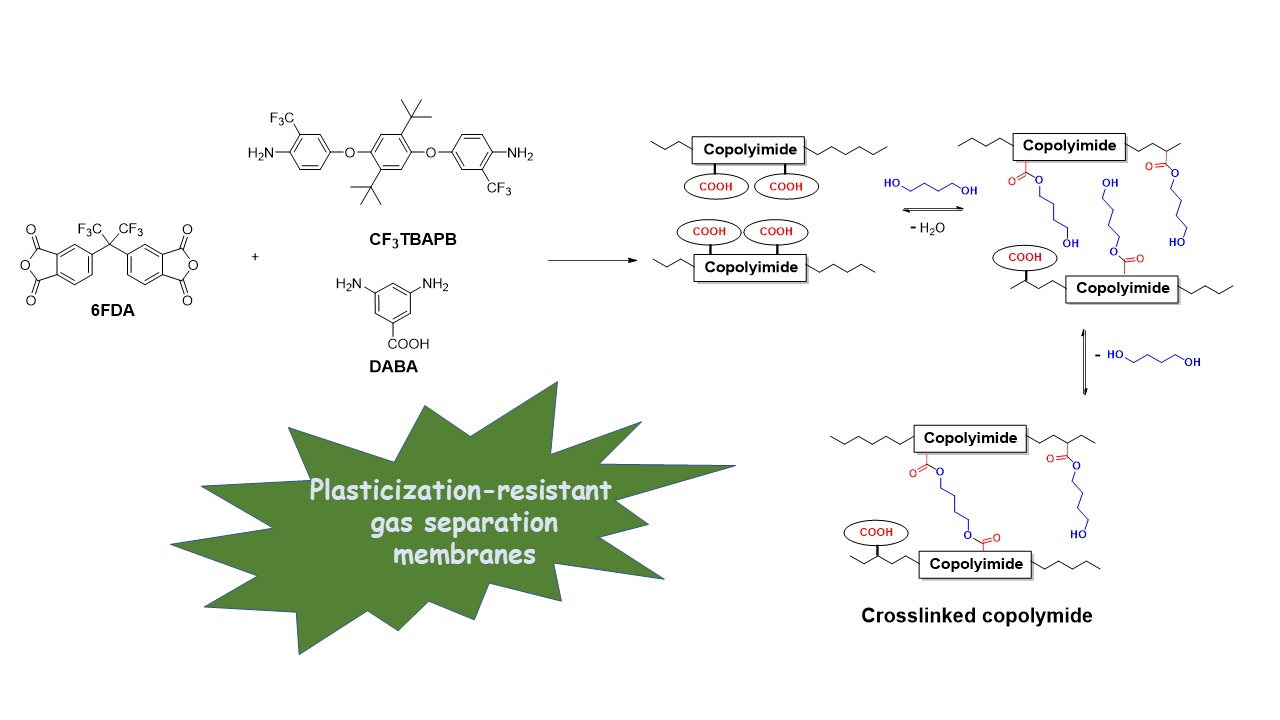A set of aromatic copolyimides was obtained by reaction of 4,4′-(hexafluoroisopropylidene) diphthalic anhydride (6FDA), and mixtures of the diamines 1,4-bis(4-amino-2-trifluoromethylphenoxy)-2,5-di-tert-butylbenzene (CF3TBAPB) and 3,5-diamino benzoic acid (DABA). These polymers were characterized and compared with the homopolymer derived from 6FDA and CF3TBAPB. All copolyimides showed high molecular weight values and good mechanical properties. The presence of carboxylic groups in these copolymers allowed their cross-linking by reaction with 1,4-butanediol. The crosslinked polymer films were extensively characterized and it was observed that the degree of crosslinking was low in the copolyimides possessing a small number of carboxyl groups. The degradation temperature of these crosslinked copolyimides was lower than their corresponding non-crosslinked ones. Glass transition temperatures were higher than 260 oC, showing the non-crosslinked copolyimides the highest values. Young moduli of these crosslinked showed values higher than 1.9 GPa, and slightly lower elongation at break when compared with the precursor copolyimides. All copolyimides (precursor, and crosslinked ones) films could be tested as gas separation membranes. It was seen that CO2 permeability values were around 100 barrer, having better selectivity than that of the homopolymer. Moreover, the plasticization resistance of the crosslinked material having a large number of carboxylic groups was excellent.

